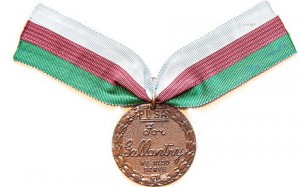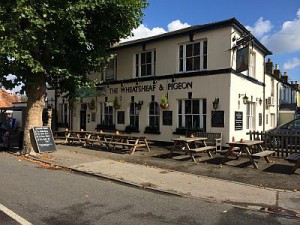Falling Down the Thames Blog 42, 31st December 2014
All Alone on the Thames
In 2012, the riverside community of Staines changed its name to Staines-upon-Thames. It seems that the community had been unflatteringly lampooned by a comedian rapper, and it wanted to improve its image. Krista and I will paddle past Staines on Monday 27 April, and I am sure that we will find it to be a delightful place full of wholesome, enthusiastic people.
Curiously, in the Wikipedia entry for Staines, the first listed “Notable Resident” is All Alone, a pigeon.
The National Pigeon Service was established in 1938. During WWII, more than 200,000 young pigeons were donated to the service. These were used by the Royal Air Force and the Army Intelligence Services. By the end of the war, more than 16,000 pigeons had been parachuted onto the continent, used to return critical information to the UK when other means were unavailable or inappropriate.
One of these was All Alone, whose service number was NURP.39.SDS.39. In 1943, this bird was parachuted into Vienne France, along with a British agent. The agent collected information vital to the war effort, and sent it back to England with All Alone. The pigeon made the trip of 645 kilometres in just 24 hours. In 1946 she was decorated with the Dickin Medal which recognizes acts of animal bravery or exceptional devotion to duty.
The Dickin Medal was instituted in 1943. The medal has been awarded 66 times, some recently, but most for action during WWII. Most of the recipients have been pigeons, with a few horses and dogs, and one cat. One-fifth of all Dickin Medal recipients (twelve) are buried at the Ilford Animal Cemetery in Ilford, London. All Alone does not appear to be among them.
All Alone’s owner was Jas Wilfred Paulger, who owned the Blue Anchor pub in Staines. I have found some details about Paulger online, but have not been able to verify any of them yet. I gather that Paulger lived from 1880-1946. He may have acquired the Blue Anchor in 1937. The Blue Anchor was situated at 13-15 High Street, Staines. The pub existed before 1700, but ceased operations in 2006, when it was converted to a restaurant. The building is just 100 metres from the River Thames.
Online sources suggest that the Paulger family lived in England, perhaps near Manchester, before moving to New Zealand. I suspect that Jas Paulger either remained behind in England, or (far more likely, given the dates), moved back to England at some point. When he died, just after the end of WWII, he was a publican and pigeon-fancier. If this is all correct, then I strongly suspect that Paulger would have had one or more pigeon coops on the roof of the Blue Anchor.
That is not the only connection between beer, birds and Staines. The Wheatsheaf and Pigeon is the most celebrated pub in Staines, having won an award as Best Thames Local pub in 2012. It is about 260 metres from the River Thames. Reference to a pigeon may be a coincidence, but that seems statistically unlikely to me. I can imagine the pub being renamed when All Alone received her medal.
As part of our River Thames adventure, Krista and I are looking further into this story. We are, for instance, trying to determine whether the Wheatsheaf and Pigeon is named, in part, after All Alone. We would like to know the location of the remains of All Alone. It seems unlikely that her body would have been tossed out, considering her fame. She may have been stuffed. If so, she might be at the Blue Anchor, the Wheatsheaf and Pigeon, or at a war museum. Perhaps evidence of a pigeon coop remains on the roof of the Blue Anchor building.
Let’s see what we can find.
- Glen
Photo credits: All Alone – www.rpra.org; Becket medal – www.telegraph.co.uk; Wheatsheaf and Pigeon, Staines – www.thamesriver.co.uk



